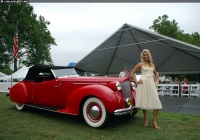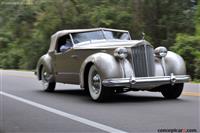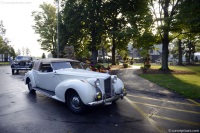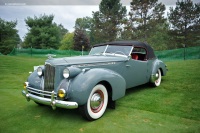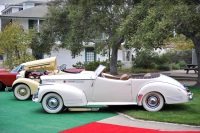Coachwork by Darrin
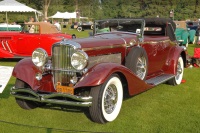
Chassis number: 2571
Engine number: J-543
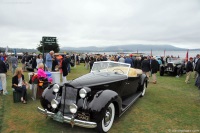
Chassis number: A309389
Engine number: C325338D
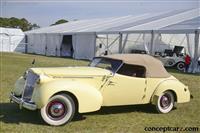
Chassis number: B319346A
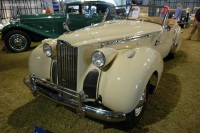
Chassis number: 18062025
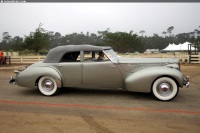
Chassis number: 1807-2015
Engine number: C500740
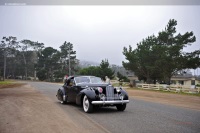
Chassis number: 18062007
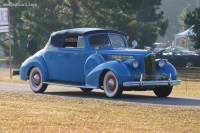
Chassis number: 13993539
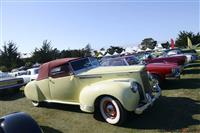
Chassis number: D305456
Howard 'Dutch' Darrin was born to money and comfort and blessed with an eye and a sense for style, design and balance. Darrin was not, however, quite as well supplied with family money as his contemporary, Edsel Ford, and labored successfully among his social counterparts during a 40-year career in America and Europe designing some of the most important, successful, elegant and creative coachwork of the Classic Era.
Early in his career Darrin worked at the family company, Automatic Switch Company in New Jersey, designing complex electrical switching systems, including the first push-button elevator switch used by Otis Elevator, experience which later stood him in good stead coping with the mechanical complexities of coachwork including folding-top mechanisms, his famous sliding-door system and relocating the steering column and wheel for lower cowl and hood lines.
Darrin was the ideal representative for LeBaron to send to Paris to represent them in 1922 where his naturally ebullient personality blended smoothly with the 'Jazz Age.' But barely a year later he joined with LeBaron colleague Tom Hibbard to form Hibbard & Darrin. Over the next 15 years, they and Darrin's later partner, a banker named Fernandez, created groundbreaking designs, skillfully executed in their own shop, on the most luxurious chassis. So innovative was their work that in 1927 General Motors licensed a Hibbard & Darrin hood and fender treatment for Cadillac, paying the then-considerable sum of $25,000 plus $1,000 per month for the privilege.
Rebounding from a recession in the French economy in 1937, Darrin returned to the U.S. where he set up his own coachworks on Sunset Boulevard in Hollywood. The name he chose, 'Darrin of Paris,' was as flamboyant as his coachwork designs. His name, reputation - and no doubt his bon vivant personality - brought the operation success.
Darrin's favorite body style was the convertible victoria and he excelled at its execution, not only by creating an innovative compromise between sporting and formal coachwork, but also by his mastery of the complicated three-position top mechanism. In Darrin's idiom, a convertible victoria was an open body with seating for four in which the top, which usually completely disappeared when stowed, had an intermediate position which covered the rear seats but left the driver's compartment open in the manner of a formal town car. In 1937 Darrin of Paris executed a cut-down door disappearing-top Victoria on a Packard One-Twenty chassis for actor **** Powell which was quickly followed by three 1938 Packard Super Eight victorias. Brought to Packard President Alvan MacAuley's attention by Packard's Los Angeles distributor, Earle C. Anthony, the Packard Darrins were cataloged by Packard in 1940 and are the most desirable of all Packards of this period.
Packard Darrins combine a stylish presence and a sporting attitude with the quality and performance of the Packard chassis and engine. They have panache, much like Darrin himself, the other cars of the period strove to emulate but rarely, if ever, achieved. They will, like a few timeless designs from automobile styling history, stop traffic and strike up conversations in any situation. They are just exception.
Early in his career Darrin worked at the family company, Automatic Switch Company in New Jersey, designing complex electrical switching systems, including the first push-button elevator switch used by Otis Elevator, experience which later stood him in good stead coping with the mechanical complexities of coachwork including folding-top mechanisms, his famous sliding-door system and relocating the steering column and wheel for lower cowl and hood lines.
Darrin was the ideal representative for LeBaron to send to Paris to represent them in 1922 where his naturally ebullient personality blended smoothly with the 'Jazz Age.' But barely a year later he joined with LeBaron colleague Tom Hibbard to form Hibbard & Darrin. Over the next 15 years, they and Darrin's later partner, a banker named Fernandez, created groundbreaking designs, skillfully executed in their own shop, on the most luxurious chassis. So innovative was their work that in 1927 General Motors licensed a Hibbard & Darrin hood and fender treatment for Cadillac, paying the then-considerable sum of $25,000 plus $1,000 per month for the privilege.
Rebounding from a recession in the French economy in 1937, Darrin returned to the U.S. where he set up his own coachworks on Sunset Boulevard in Hollywood. The name he chose, 'Darrin of Paris,' was as flamboyant as his coachwork designs. His name, reputation - and no doubt his bon vivant personality - brought the operation success.
Darrin's favorite body style was the convertible victoria and he excelled at its execution, not only by creating an innovative compromise between sporting and formal coachwork, but also by his mastery of the complicated three-position top mechanism. In Darrin's idiom, a convertible victoria was an open body with seating for four in which the top, which usually completely disappeared when stowed, had an intermediate position which covered the rear seats but left the driver's compartment open in the manner of a formal town car. In 1937 Darrin of Paris executed a cut-down door disappearing-top Victoria on a Packard One-Twenty chassis for actor **** Powell which was quickly followed by three 1938 Packard Super Eight victorias. Brought to Packard President Alvan MacAuley's attention by Packard's Los Angeles distributor, Earle C. Anthony, the Packard Darrins were cataloged by Packard in 1940 and are the most desirable of all Packards of this period.
Packard Darrins combine a stylish presence and a sporting attitude with the quality and performance of the Packard chassis and engine. They have panache, much like Darrin himself, the other cars of the period strove to emulate but rarely, if ever, achieved. They will, like a few timeless designs from automobile styling history, stop traffic and strike up conversations in any situation. They are just exception.
Q: What manufacturers did Darrin create coachwork for? A: Darrin created coachwork for (at least) the following manufacturers: Duesenberg, Ford, Packard Q: What body styles did Darrin create? A: Darrin created (at least) the following body styles: Convertible, Convertible Coupe, Convertible Sedan, Convertible Victoria, Darrin Convertible Victoria, Parisienne Victoria, Roadster, Sport Sedan, Town Coupe

